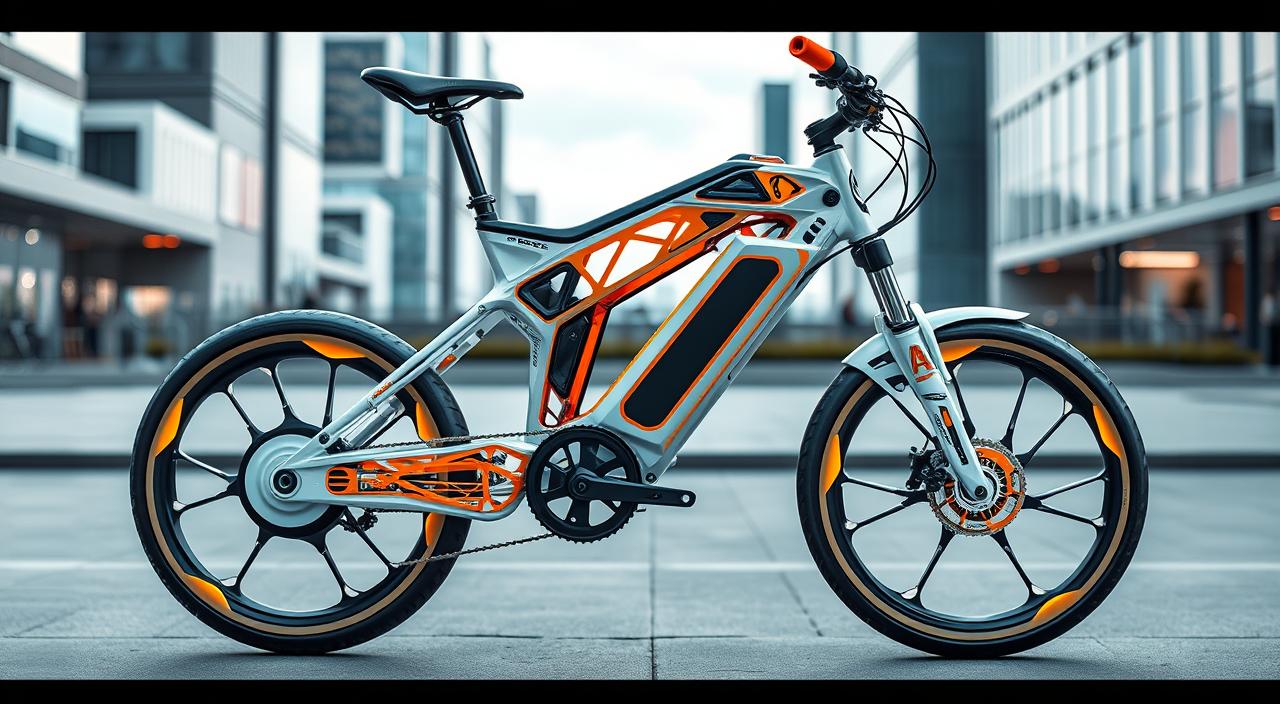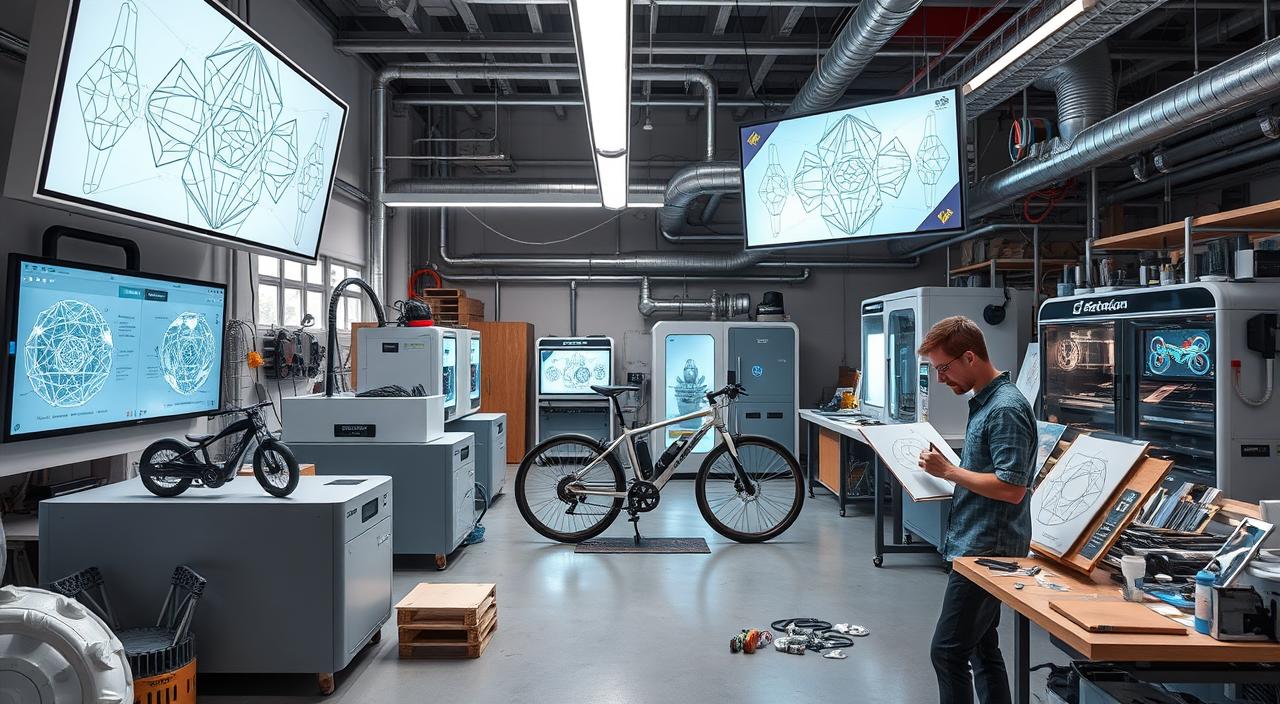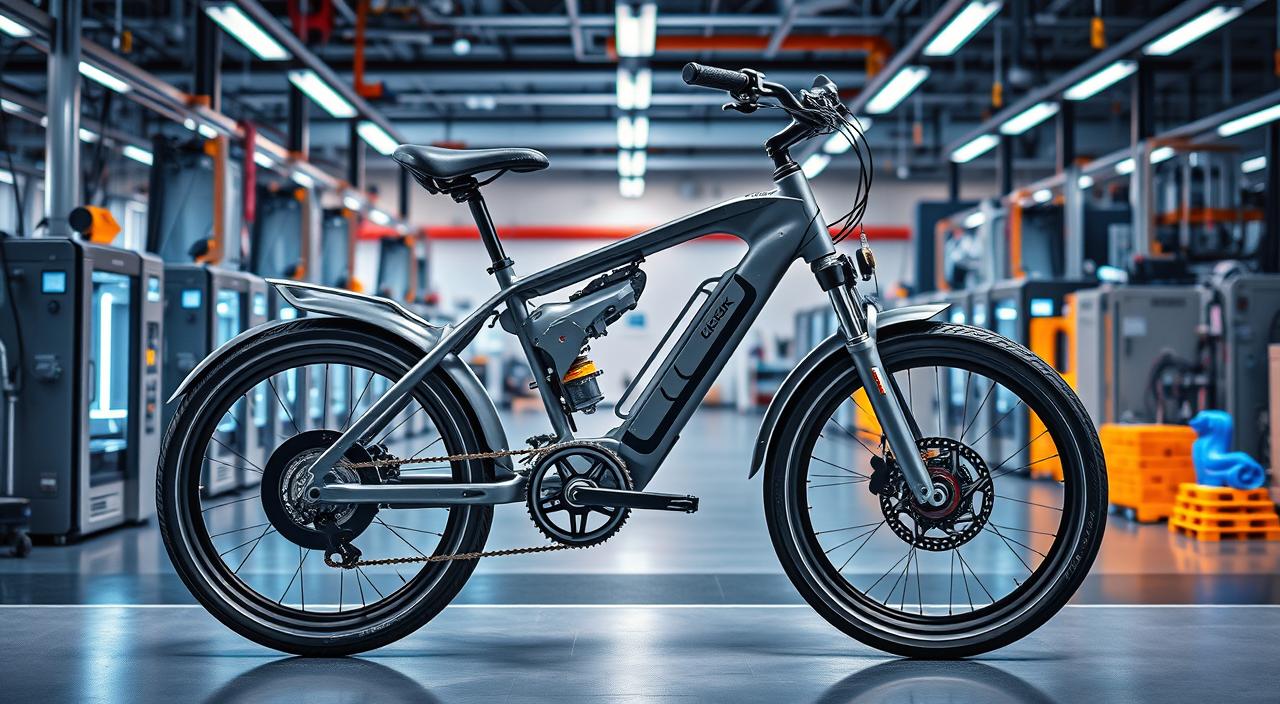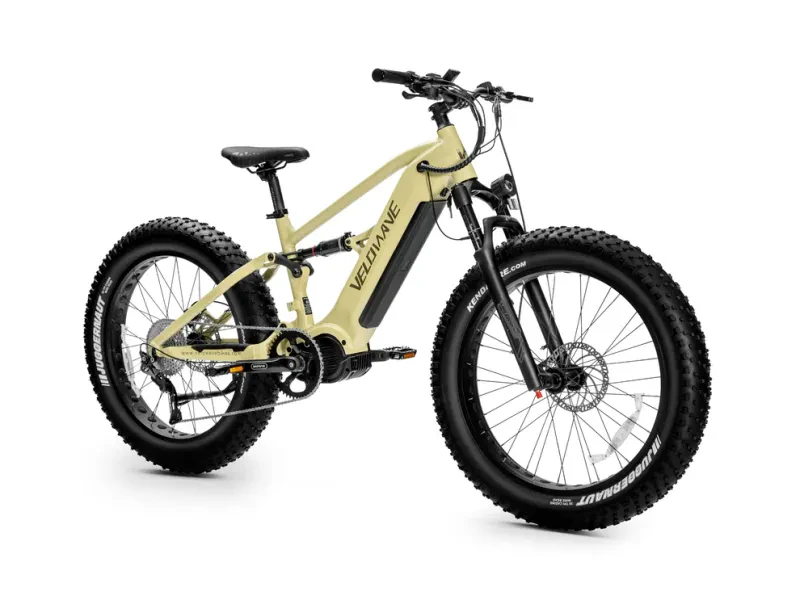The world of cycling is on the verge of a transformative shift. 3D printing technology is making its mark in e-bike innovation. It allows designers to create custom, complex, and tailored bike components.
This process is changing what's possible in electric bike design. It boosts creativity and supports sustainability by reducing material waste. As we explore how 3D printing is changing e-bike design, we'll see its impact on functionality, personalization, and the future of cycling.

The Evolution of Electric Bike Design
The journey of e-bike design has been amazing, moving from simple bikes to advanced electric ones. At first, these bikes had basic parts, which limited their performance. But with the addition of electric power, they became faster, went further, and were more fun to ride.
As technology got better, makers started adding smart features and better materials. The use of 3D design has been key, allowing for complex shapes that boost performance and cut down on wind resistance. These changes have led to lighter, more efficient bikes, raising the bar in the industry.
This ongoing change in e-bike design is setting the stage for even more progress. With 3D printing, making electric bikes is about to get a whole lot more exciting. This new method could change how bikes are designed and made, ushering in a time of endless possibilities and personal touches.
Understanding 3D Printing Technology
Grasping 3D printing technology is key to seeing how it changes electric bike design. There are different 3D printing methods, like Fused Deposition Modeling (FDM), Stereolithography (SLA), and Selective Laser Sintering (SLS). Each method creates parts in its own way.
FDM builds parts layer by layer using melted plastic. SLA uses a laser to harden liquid resin into solid shapes. SLS fuses powdered material with a laser, making strong and detailed parts.
These methods change how e-bikes are made. 3D printing brings better precision, making it easier to create complex designs. It also speeds up making prototypes, leading to faster new ideas.
Using 3D printing, engineers can try new materials and designs. This improves e-bike performance and looks.
By understanding 3D printing, companies can make e-bikes in new and exciting ways. This opens up a world of creativity and efficiency in making e-bikes.

The world of e-bike design has seen big changes with 3D printing. This new tech lets designers try out new ideas that were hard to do before. It's not just about looks; it also makes bikes better by using special materials and shapes.
Impact on Design Flexibility
3D printing brings huge design freedom to e-bikes. Old ways of making things limited what designers could do. But 3D printing lets them create complex shapes that make bikes lighter and faster.
Designers can add special parts easily. This means e-bikes can be made for different riders and places.
Rapid Prototyping Possibilities
Another big plus is how fast you can make prototypes. Designers can quickly test and improve their ideas. This fast cycle of making and testing helps bring new designs to market faster.
It lets makers quickly change their designs based on what people want. This helps them stay ahead in the market.
Benefits of 3D Printing in Electric Bike Manufacturing
3D printing is changing e-bike making for the better. It makes production faster and cheaper. This meets what customers want.
Cost-Effectiveness
3D printing is very cost-effective. It lets makers make parts as needed, cutting down on storage costs. This way, companies save a lot of money.
Traditional methods often waste a lot of material. But, 3D printing builds parts layer by layer. This means less waste and lower costs.
Reduced Waste and Sustainability
3D printing also makes e-bike making greener. It cuts down on waste a lot compared to old ways. This is good for the planet and for people who care about it.
As we move towards cleaner production, 3D printing is key. It's helping make the e-bike world more eco-friendly.

E-Bike Innovation Through Additive Manufacturing
E-bike innovation through additive manufacturing has changed the game for electric bicycles. This tech lets makers create unique designs that boost performance and cut down on weight. Features like advanced battery housings use 3D printing to make parts that are both light and aerodynamic.
This tech also lets designers get creative with their designs. They can make frames that look great and work well. This means bikes that are not just high-tech but also look amazing.
The mix of 3D printing and e-bike design brings together performance and new ideas. Now, bikes can be made for different riding styles, so everyone can find the perfect one. This fusion of practicality and creativity is shaping the future of cycling.
Customization Opportunities with 3D Printing
The world of e-bikes is changing fast, thanks to 3D printing. This tech lets makers create e-bikes that match what each rider wants. It makes sure every ride is special. Before, getting a bike that fits your style was hard. Now, it's easier than ever.
Personalized Designs for Consumers
Now, people can pick their e-bike's colors, shapes, and details. This means e-bikes can show off a rider's style. No more settling for bikes made for everyone else. You can have a bike that's truly yours.
Tailored Components for Enhanced Performance
Custom parts can make your e-bike better than ever. You can change the seat height, the bike's shape, and more. This makes your bike not just look good but ride better too. It's all about making your bike fit you perfectly.
Future of E-Bike Design with 3D Printing
The future of e-bike design with 3D printing looks very promising. Manufacturers will use this technology to make e-bikes better and more adaptable. They will use smart materials that make e-bikes perform well in different conditions.
This means e-bikes will be able to adjust to various riding situations. This will make the ride better for everyone.
There's a big shift towards using IoT technologies in e-bikes. This will lead to the creation of next-generation e-bikes. These bikes will have smart features that let riders track their performance and get help with navigation.
With 3D printing, making e-bikes that fit exactly what riders want will become easier. This means everyone can find an e-bike that looks and works just right for them.
Case Studies: Successful 3D Printed E-Bikes
Several companies have shown how 3D printing can change e-bike design. Trek is a great example. They use 3D printing to make parts that make their bikes better and look great. This has led to lighter bikes that are more efficient.
Specialized is also leading the way. They use 3D printing to make prototypes fast and change designs easily. This shows how 3D printing can make bikes better and faster to make. They make bikes with shapes that are hard to make with old methods.
There are also partnerships between makers and designers. They create complex parts with 3D printing. This makes e-bikes lighter, stronger, and more tailored to what people want.
Sustainable E-Bike Manufacturing with 3D Printing
Using 3D printing for e-bike making is a big step towards caring for our planet. It uses eco-friendly ways to make bikes. This means less waste and keeping the quality high.
3D printing also saves energy, which is great for the environment. It lets companies make bikes closer to where they sell them. This cuts down on shipping costs and pollution.
Adding 3D printing to bike building shows a big commitment to a greener future. As more companies use this tech, we're moving towards a cleaner way to travel.
Challenges in Adopting 3D Printing for E-Bikes
Using 3D printing in the e-bike world comes with big challenges. One major issue is the high cost of starting. Companies, especially small ones, struggle with the price of top-notch 3D printers and software.
Another problem is finding the right materials for e-bike parts. Many common materials like metals and composites are hard to find in 3D printing. This limits what designers can create and how well it works.
There's also a need for skilled workers to run and fix these complex machines. This skill gap is a big obstacle for companies trying to use 3D printing.
Lastly, following safety and performance rules adds to the complexity. It makes it harder and takes longer to start using 3D printing. It's also tough to fit new tech into old ways of making things.
Conclusion
Exploring 3D printing and its role in e-bike design shows a big change in cycling. It brings many benefits like more design options, quick prototypes, and custom bikes for everyone. This tech is leading the way, making bikes better and more creative than ever before.
The future of making e-bikes looks bright, with a focus on being green. This means making bikes in ways that are good for the planet. Additive manufacturing helps make bikes more eco-friendly and meets the needs of all riders.
Looking forward, the e-bike world should really get into 3D printing. It opens up new possibilities for making bikes better and greener. This tech can help make the future of e-bike design and production exciting and sustainable.


